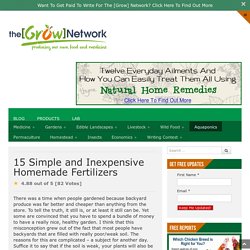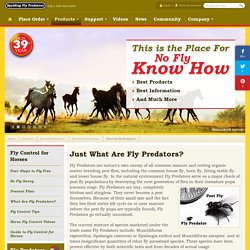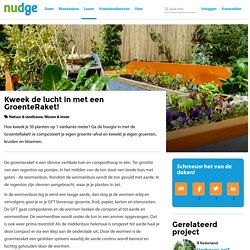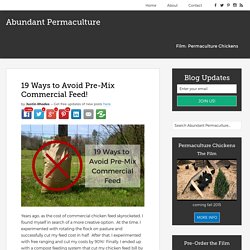

DIY Flock Block Substitute. Grow, Prepare, and Preserve Your Own Food and Medicine. Yes, it’s true.

While many people grow ornamental plants sheerly for their beauty, many of these plants are also edible. Take a look below and see if you might be growing some delicious decor in your yard already. Hosta – By Nova (Own work) CC BY 3.0 via Wikimedia Commons 1. Hosta (Hosta spp.) Hostas are adored by gardeners from zone 3 through zone 9 as an easy, adaptable perennial. For consumption, hostas are at their prime when they start to emerge in the spring, that is, when the young leaves are furled (they are called hostons). Dame’s Rocket – By Björn S. 2. You can sometimes find this beauty growing as an escaped, and in some states she is classified as an invasive weed. Grow, Prepare, and Preserve Your Own Food and Medicine.
There was a time when people gardened because backyard produce was far better and cheaper than anything from the store.

To tell the truth, it still is, or at least it still can be. Yet some are convinced that you have to spend a bundle of money to have a really nice, healthy garden. I think that this misconception grew out of the fact that most people have backyards that are filled with really poor/weak soil. The reasons for this are complicated – a subject for another day. Suffice it to say that if the soil is weak, your plants will also be weak. This means that you need to enrich your soil. Making your own organic plant food is easy and fun. The key to a good garden is good soil. While it may not be the most exciting of gardening topics, nothing is more important than having a basic understanding of fertilizer. Organic Fertilizers Versus Synthetic Fertilizers Understanding the Basics about Fertilizer Easy Household Fertilizers Four Easy Homemade Fertilizer Recipes Fish Emulsion Recipe.
Just What Are Fly Predators? - Fly Control For Horses - Spalding Labs. Fly Predators are nature’s own enemy of all common manure and rotting organic matter breeding pest flies, including the common house fly, horn fly, biting stable fly and lesser house fly.

In the natural environment Fly Predators serve as a major check of pest fly populations by destroying the next generation of flies in their immature pupa (cocoon) stage. Fly Predators are tiny, completely biteless and stingless. They never become a pest themselves. Because of their small size and the fact they live their entire life cycle on or near manure (where the pest fly pupa are typically found), Fly Predators go virtually unnoticed. Laat_zaaien_aug-sept.pdf. Kweek de lucht in met een GroenteRaket! De groenteraket is een slimme vertikale tuin en composthoop in één.

Ter grootte van een regenton op pootjes. In het midden van de ton staat een brede buis met gaten - de wormenbuis. Harvesting Worms from Compost. Collecting Compost Worms for free. Directory of Culinary and Medicinal Herbs. From soothing aloe to spicy horseradish, subtle-sweet marjoram to savory thyme, discover the exceptional flavors and gentle healing capabilities of more than 40 of the plant kingdom’s finest here in the MOTHER EARTH NEWS Directory of Culinary and Medicinal Herbs.

Our tour of the herb world is your one-stop shop for reliable information on cultivating, cooking and healing with these special plants. Herbs crown the cook’s glory, and each plant’s profile below will show you how to harvest and store it for optimal quality, plus furnish you with recipes showcasing the ingredient’s knack for improving or complementing flavors, such as Rosemary-Almond Biscotti, Sage-Cheddar Bagels, and bundles more. Many herbs are also valuable in the medicine cabinet, whether you’re looking for natural relief for a cold or headache, or trying to ease more chronic ailments, such as allergies, back pain or high blood pressure.
Grow Your Herb Garden Drying and Storing Herbs To freeze or to dry? Grow: Heal: Cook: Grow: Red Worm Composting.
Growing Food. (video) Simple & Effective Worm Composting On Your Homestead with Marjory Wildcraft. 19 Ways to Avoid Pre-Mix Commercial Feed! - Abundant Permaculture. Years ago, as the cost of commercial chicken feed skyrocketed, I found myself in search of a more creative option.

At the time, I experimented with rotating the flock on pasture and successfully cut my feed cost in half. After that, I experimented with free ranging and cut my costs by 90%! Finally, I ended up with a compost feeding system that cut my chicken feed bill by 100% and gave me three cubic yards of compost a week! My fascination with more natural (and much less expensive) feeds continues to grow and my list of creative food sources expands. In this article, I’ll share with you many alternative food sources for your flock that will dramatically (if not completely) reduce your dependency on commercial grain.
Once you’re ready to implement one or more of these ideas you can download my free printable worksheet at the end of the article. Before we explore the list of creative food sources, we should look at some basic principles to reduce our need for food in the first place. Ration. MijnTuin.org. Diana's mooie moestuin.